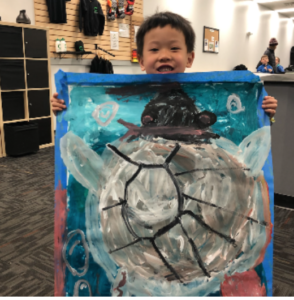Imagination
By CPMAstudio In Insight“Every child is an artist. The problem is how to remain one.” – Pablo Picasso
Imagination is the ability to see with our mind, picturing objects, processes, and abstract ideas solely with the power of our thoughts. Imagination helps us understand what we learn in school, or solve problems, or create something completely new and innovative. I view it as a crucial skill, with the power to save and transform lives.
We tend to view Life Skills as expressions of our inner strength or power. We picture (aha! we’re using our Imagination already….) a strong, confident person, tough as nails, meeting every test that life throws their way. Personal attributes such as discipline, determination and courage are existentially important, and no one can succeed without them. However, we also have to know what we’re using our inner power for, where we want to go, what we want to create or uphold. Imagination is a crucial part of that, because it applies the power of our minds to seeing things as they could be or should be or will be; and that gives us the ability to truly unlock our incredible potential as human beings.
Almost everything we cherish about our lives and our civilization requires imagination to create it, sustain it, or understand it. One the one hand we have Albert Einstein’s “gedankenexperiment” (thought experiments) in which he visualized aspects of time, space and gravity that were later supported by actual, physical experiments and have been used to create actual, practical technology. On the other hand, we have unknown people, deep in our collective past who first began to measure the year and developed calendars, mathematics and the first systematic exploration of our world. Before there were tools, we had our mind’s ability to see things, to imagine.
People are naturally imaginative, but we don’t always keep that skill as we mature. In 2011 a psychologist named Kamran Abbasi published a long-term study of creativity and human development. Researchers gave paper clips to children, teens and adults and asked them to come up with as many uses for the paper clip as possible. Children came up with vastly more uses, as many as 200. Adults came up with 10-15 uses. The older we get, the less imaginative we become. A few people retain their imaginative talents, and they become the people who create the world around us.
We can stay imaginative and creative. First, we can recognize and celebrate imagination truly as a life skill. I’ve seen it first-hand during the quarantine. Our young Karate Students have had to use their imagination to make progress with their physical skills, they’ve had to imagine how their skills are to be used, with no one there to practice with. They’ve had to imagine many other things as well in order to stay healthy and happy though the challenge of the quarantine.
The next thing we can do is to make time and space for our imagination to thrive. We all need to time away from phones, screens, and the demands of our day. When was the last time you looked at the clouds? Or just sat next to an open window at night, and listened to the rain fall? Does that sound a little goofy? Perhaps. But imagination needs room.
Finally, we can foster and support ways to keep imagination powerful and vibrant. First graders are given many opportunities to create things and have fun with objects and ideas. However, these opportunities diminish as we grow older. Gradually, we replace imagination with other things; and while they’re important too, there is no substitute for seeing something new with the power of our mind. We all know that the world keeps changing, and we have to meet new challenges every day. We can meet them with discipline and strength, but also with new ideas and understanding. We only get those if we take the time to look up at the sky and imagine.




